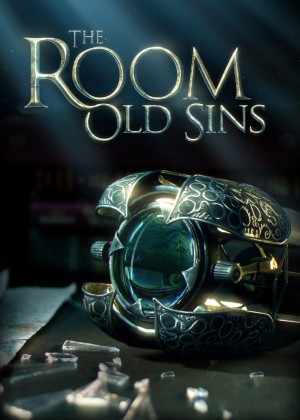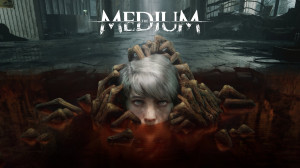Review for The Room 4: Old Sins

Being a huge fan of The Room series, I was impatiently looking forward to the PC release of the fourth installment, Old Sins. Having played The Room Three on both a mobile device and PC, I can honestly state that the latter is far superior in terms of graphics and sound; the downside is the lengthy delay between versions! Fortunately, once again developer Fireproof Games made it well worth the wait, with a visually stunning presentation and high-fidelity sound and music to match. Series fans will have seen some of the same puzzles before, but the majority of challenges continue to be fresh and rewarding to solve. Those hoping that the growing story arc from the first three games would finally yield some answers may be disappointed to know that there is no continuation here, and no concrete resolution to the mystery of The Null. On the plus side, that means that we can hopefully expect more from the franchise in the future.
You start out at the main menu with the familiar haunting theme music playing in the background, where you can create one of three profiles and customize your game settings for each. Once you begin playing there is a brief tutorial (that cannot be skipped) to familiarize you with the mechanics (interface, interaction and inventory) in case you are new to the series. The entire game is played using the mouse: left-click on inventory items to examine/manipulate them, click and drag the left button to look around, double-click on locations to zoom in, and right-click to zoom out. Animated arrows show you how to use objects that can be interacted with directly.
Immediately it is clear that this is not a continuation of The Room Three, but rather a brand new setting with new characters and storyline. You start in a dimly lit room, which your unseen avatar describes as the attic of a house. Of course you will need to solve a few basic puzzles to shed light on the room via a spotlight that reveals a dollhouse replica of the very same building. In your briefcase you will find your assignment, which is to locate a “sample” hidden somewhere in the house. You will also find an eyepiece, a critical tool for finding concealed objects and messages and solving puzzles, as in previous games.
Also in your briefcase are dossiers on the previous inhabitants of the manor. Edward Lockwood was a mechanical engineer who dabbled in chemistry and held a position at the Royal Institute for just one year before he was dismissed due to “unspecified misconduct”. His wife, Abigail Waldegrave, was a classically trained artist, known for funding exhibitions. She inherited Waldegrave Manor from her father, and the family’s substantial debt along with it. A note hints that Lockwood was hired by unnamed employers but apparently failed in his task. There is also a newspaper clipping reporting the mysterious disappearance of the couple. And so, armed with your trusty eyepiece, your job is to explore the dollhouse and discover its many rooms and puzzles to solve the case. While it is never explained how you are able to explore such a tiny structure first-hand, my theory is the eyepiece is some sort of virtual reality device, which is not a stretch considering the supernatural nature of the series.
I was impressed that what at first appeared to be a relatively small dollhouse turned out to contain a surprisingly large number of places to search, all of which have distinctive themes. Through the magic of your eyepiece and the existence of “apertures” (sparkling triangles in front of an entrance, used to great effect in The Room VR to expand the play area without having to unlock additional rooms), you can gain access to even smaller areas within certain rooms. Each room is represented by a unique symbol that is revealed using the eyepiece and entered by double-clicking on that symbol. It is important to keep track of these symbols, as a puzzle late in the game requires you to navigate an object to a specific room via a basic, but tricky, maze.
As in previous episodes, the plot is revealed via journals found in each of the locations you unlock, with entries by both Abigail and Edward. In a nice touch, each time you find a journal it is filled with all previously discovered texts, so you can easily refer back to them. You’ll learn that Abigail is a strong, intelligent woman who intimidates men, and that Edward is obsessed with his work. At first the couple was loving and supportive of each other, but as Edward got closer to his goal of discovering The Null, Abigail became increasingly concerned about this health and mental state. Edward was madly in love with Abigail, and he was doing all of this work for her, but ironically his actions became increasingly destructive to their relationship and eventually they grew apart.
When you read through successive journal entries, clearly an ongoing story is being told, but the entries can be fairly obtuse so you really need to work to figure out what is going on. This is in keeping with the earlier games, as the plot threads always tend to be cryptic, but in this outing they are even more so than usual. Abigail obviously used her contacts at the Royal Institute to interfere with her husband’s work, but her motives are not clear, while Edward wrote that he felt increasingly trapped in the mansion but did not explain why – was it The Null? And while an organization called “The Circle,” a nefarious group mentioned in the first game, seems to be behind all this, there is still no resolution to what The Null is or why it is so coveted.
This lack of any further insight is one of my few quibbles with the series; we are now five games in and still have no idea what The Null is or the reason it is so important. If the developers plan on continuing to release new episodes, they should really provide more context each time as its presence as a mere McGuffin is starting to wear thin. And yet even with no further story development this time around, my enjoyment of the game was not seriously diminished. The series, after all, is first and foremost based on exploration, discovery and puzzle solving, and in that regard The Room 4 successfully delivers.
The puzzles in Old Sins, as in its predecessors, are generally superb and for the most part continue to present inventive and well-designed challenges. Here you must complete all puzzles in each of the nine rooms of the dollhouse; once each room is complete, you get a comment from Edward that sheds a bit more light on what is happening. Your progress is charted via a seal revealed early on when you place a family crest in its place at the top of one of the dollhouse towers. After you complete each room, black goo covers the related symbol and dark tentacles take over the room itself – that can’t be good!
Beginning in the foyer, you’ll eventually make your way through nine rooms that include the study, kitchen, garden, Japanese gallery, art studio and more. You first task is to solve a puzzle that will look very familiar from past games: the dreaded 3D pattern alignment, involving using the eyepiece to reveal hidden patterns and turning one or more wheels, levers, etc. to line them up. Series fans will have seen this many times already, and you will encounter it a few more times before you finish. Each time the design or environment is slightly different, but the way you solve it is always the same, which is tedious.
Thankfully there is only one other puzzle type that falls into this category: the trace-an-object-through-a-3D-rotating-path puzzle. This too has been used several times in the past and shows up again in a number of rooms. The mechanic used here is different from before and the variation is interesting, but you will surely feel as if you have been there before, and often. While I appreciate how difficult it is to come up with dozens of unique challenges for each game, I would rather have fewer high-quality ones than plowing through retreads that just aren’t any fun.
Fortunately, the majority of puzzles are indeed fresh and nicely designed, and some are quite difficult. A few, such as the beginning puzzle in the attic, can be solved quite quickly, but most of them require several steps, some more than others. Several challenges use actual physics in their solutions. One example is in the Maritime Room, where you need to find a way to open the door to a bridge inside a model submarine by adjusting the “pitch” of the model. Another example is in the Foyer, where you must rotate a square puzzle containing plastic shields on tracks that cover tiles of the same type.
Overall progress is linear, as you need to obtain a key item or clue in one room in order to advance to the next. You can unlock several rooms and access them at the same time, which might appear to give you the freedom to proceed in the order you want, but you must solve puzzles and gain objects in a specific order before closing each room. This progression sets up more complex challenges as you go along, especially when you have three or four active rooms on the go. A good example of this occurs in what is called the Curiosity Room, where an android has a speaker next to one ear. By finding and adjusting the frequency of a radio in another room, the android is able to hear the message and translate it into a clue you need to solve yet another puzzle in a completely different room. This does lead to a lot of back and forth, but trying to figure out which room to go to next based on the items and clues you uncover provides much more interesting gameplay than having each room be entirely self-contained.
One of my favourite game mechanics in any adventure is the ability to manipulate objects in inventory. Here you are able to take a closer look at anything you acquire; many objects have a unique pattern or image that will give you a clue as to where they need to be used. But you can also directly manipulate some objects to reveal or create new ones that are necessary to progress. For example, when you complete a room you will get a “strange artifact” in inventory that you must fiddle with to access an item needed to unlock something else. A simple metal coin can be adapted to form a key to unlock a puzzle box, while a metal grill needs to be unwound before it can be used successfully. There are many such objects and each time I ran across one I had a lot of fun figuring it out.
The Room 4 continues the tradition of providing subtle hints via pop-up text throughout the game, pointing you in the right direction as you click on various items or inventory objects. These are separate from the hints on demand that return in the same format as before, allowing you to reveal them one at a time (after a brief waiting period) if you get stuck. The game is so well balanced that you shouldn’t need to rely on them, however. I only used them twice, and both times were to figure out which room I needed to visit to use an inventory item I had just acquired to save time.
As we’ve become accustomed to with this series, the game looks and sounds as good as it plays. The visual design is superb, with crisp high-resolution graphics that show off every bit of fine woodwork grain, blackboards filled with scientific calculations, and peculiar steampunk-ish contraptions in various rooms of the old manor. These same scenes are then impressively altered by the eyepiece, which rotates and clicks into place when opened, much like a 35mm camera focusing for a shot. The lens transforms the entire environment with an effect like a black light dance floor with certain images and objects sometimes highlighted.
Animation is equally impressive. A good example is the rolltop desk in the study, which has no fewer than eight secret compartments that you uncover as you solve puzzles. When you complete the final one, all of them collapse as neatly as they opened to leave the desk looking as if it was never touched. Sound is equally well done, with realistic depictions of gears grinding, shelves sliding, water flowing, and steam bellowing. There is very little background music and it really only plays in dramatic moments, such as when you complete a room, and the tone is decidedly creepy. Brief bits of orchestral music will also play when you solve a major puzzle.
Your progress will once again be automatically saved when you exit, so you can pick up right where you left off in the next session. Unlike in the previous three games, once you solve a room it is not possible to go back and continue to explore it, but there really is no need to do so. You will revisit them, but only during the game’s very last puzzle, where all you do is move what looks like a chess piece from one room to another. Depending on how tempted you are to use the hints, expect to get a solid seven to ten hours of gameplay.
After five games, it is hard to know where The Room franchise is headed. The first game was a pure puzzler with just a hint of story that featured a mysterious character known as A.S. The second one expanded slightly, continuing the overall story arc with A.S. returning and a new character introduced, hired to obtain the artifact. The third included solid adventure elements and introduced a new person known as “The Craftsman,” who continued the efforts of A.S. to find The Null. Curiously, The Room 4 has abandoned that storyline, essentially telling the tragic tale of a couple destroyed by obsession with the perpetually unexplained artifact. (In The Room VR, which followed this game, the Craftsman is back and a new character “The Watcher” is introduced but not utilized.)
Despite my trouble piecing together the ongoing, overly obtuse plot, however, ultimately that matters far less than the quality of presentation and gameplay offered each time out. With just a few tired exceptions, I thoroughly enjoyed playing The Room 4: Old Sins, which impresses with its consistently top-notch graphics and sound and plenty of great puzzles. When a good-looking game is as fun as this, there’s no question I will eagerly play the next game(s) in the series as well, and if you’re new to the franchise, you can safely jump in here and not feel too left out – though I expect you’ll enjoy it so much you’ll want to go back and find out what you missed anyway.
WHERE CAN I DOWNLOAD The Room 4: Old Sins
The Room 4: Old Sins is available at:
- Itch.io --100%
- Steam
- HumbleBundle






























